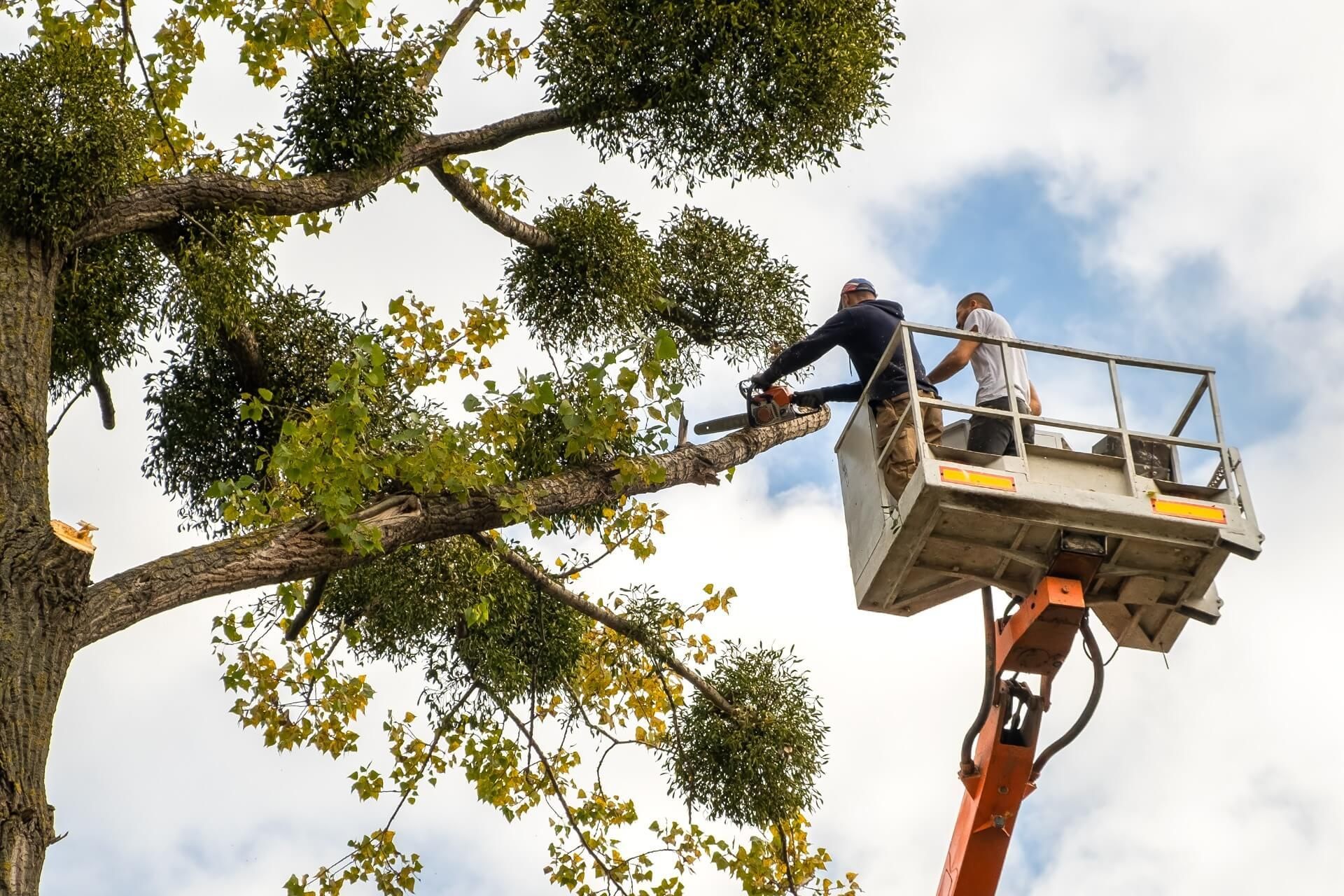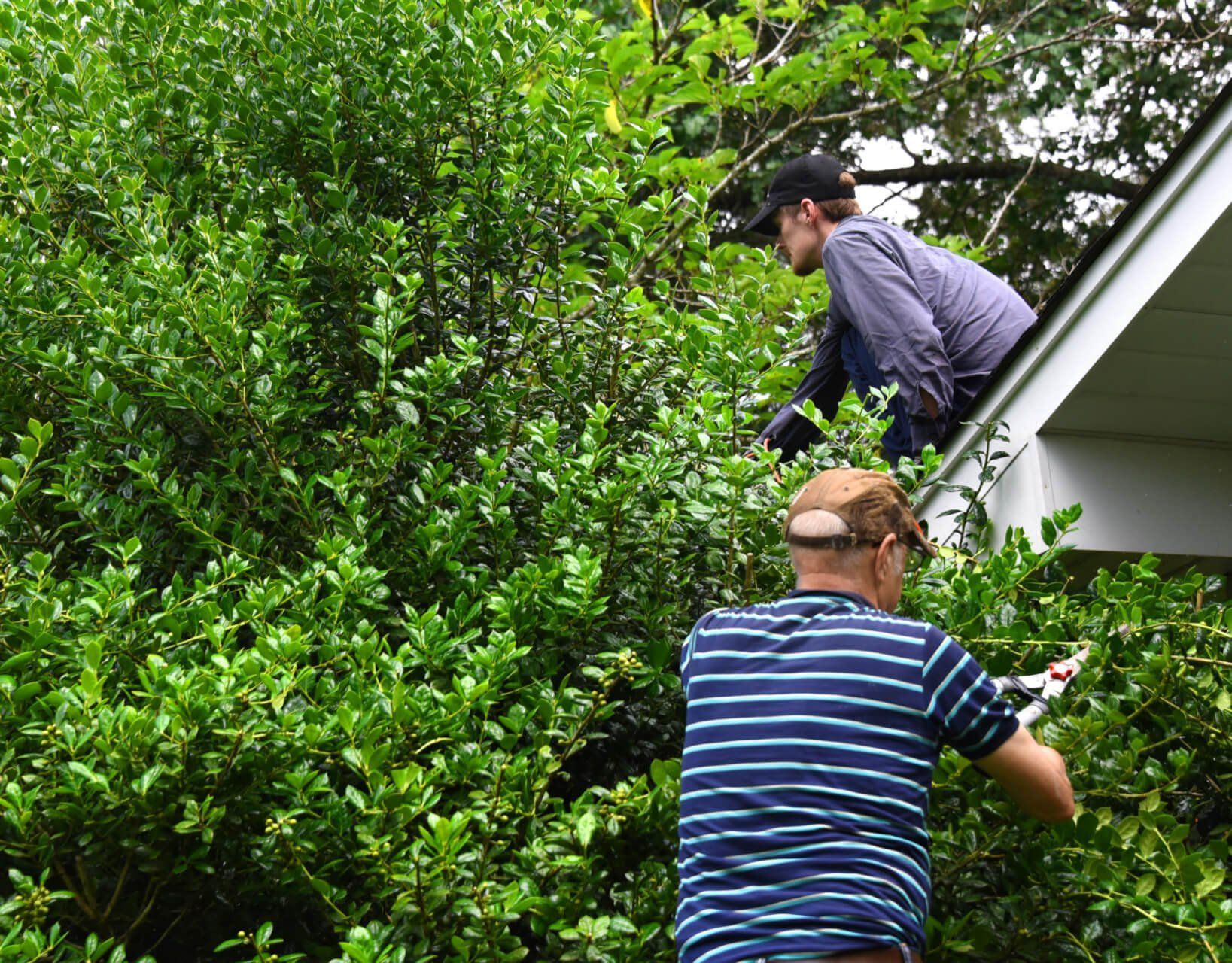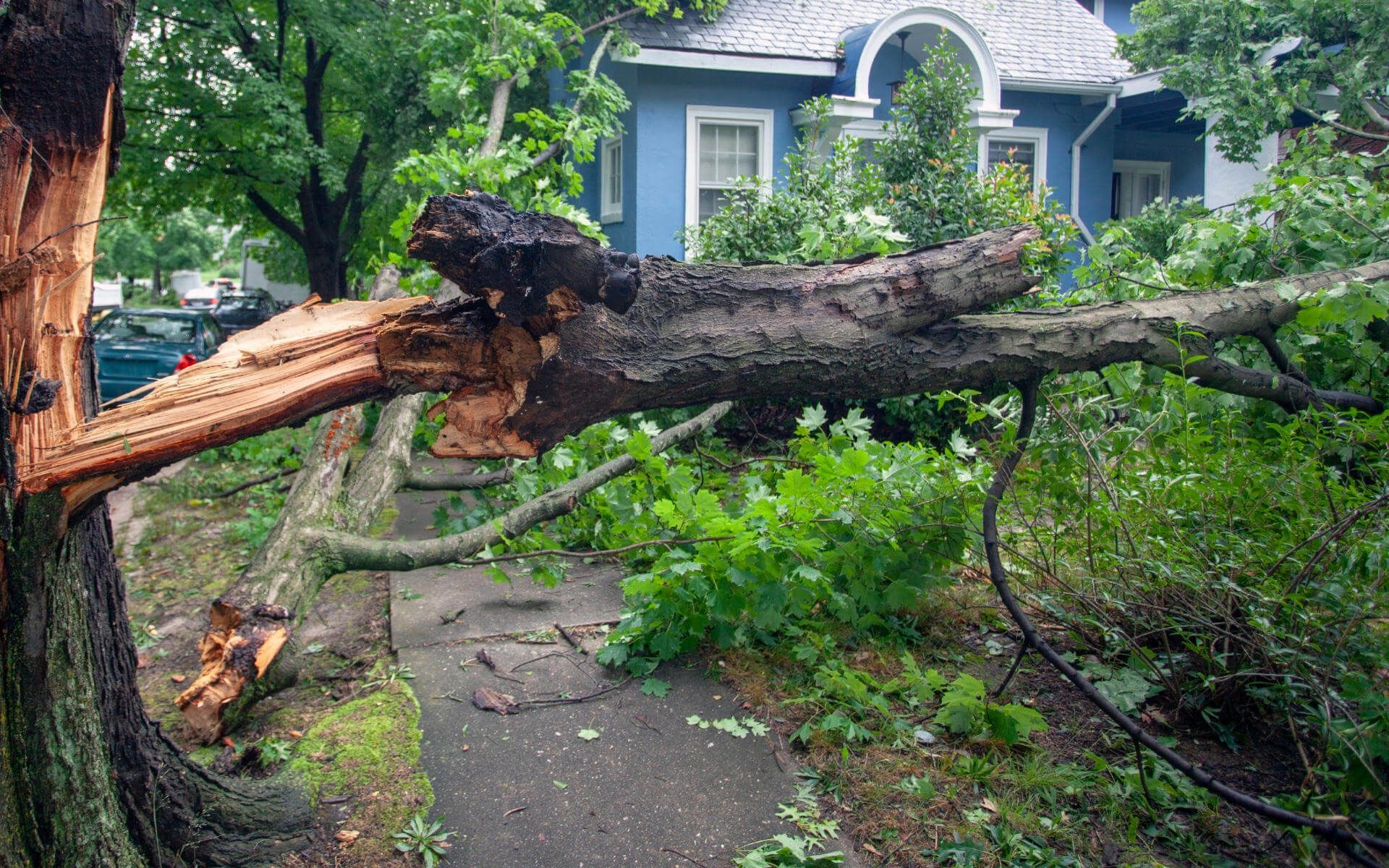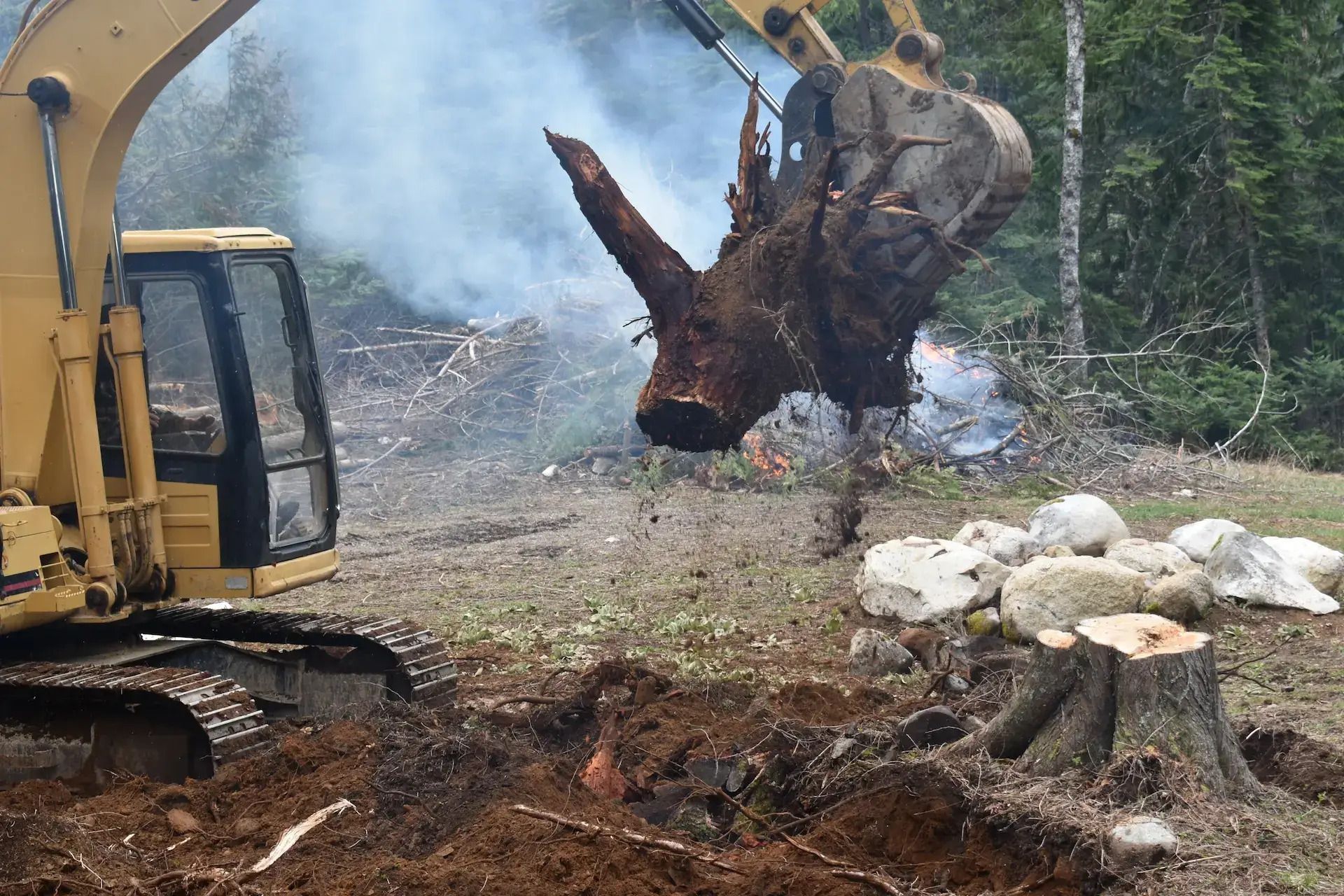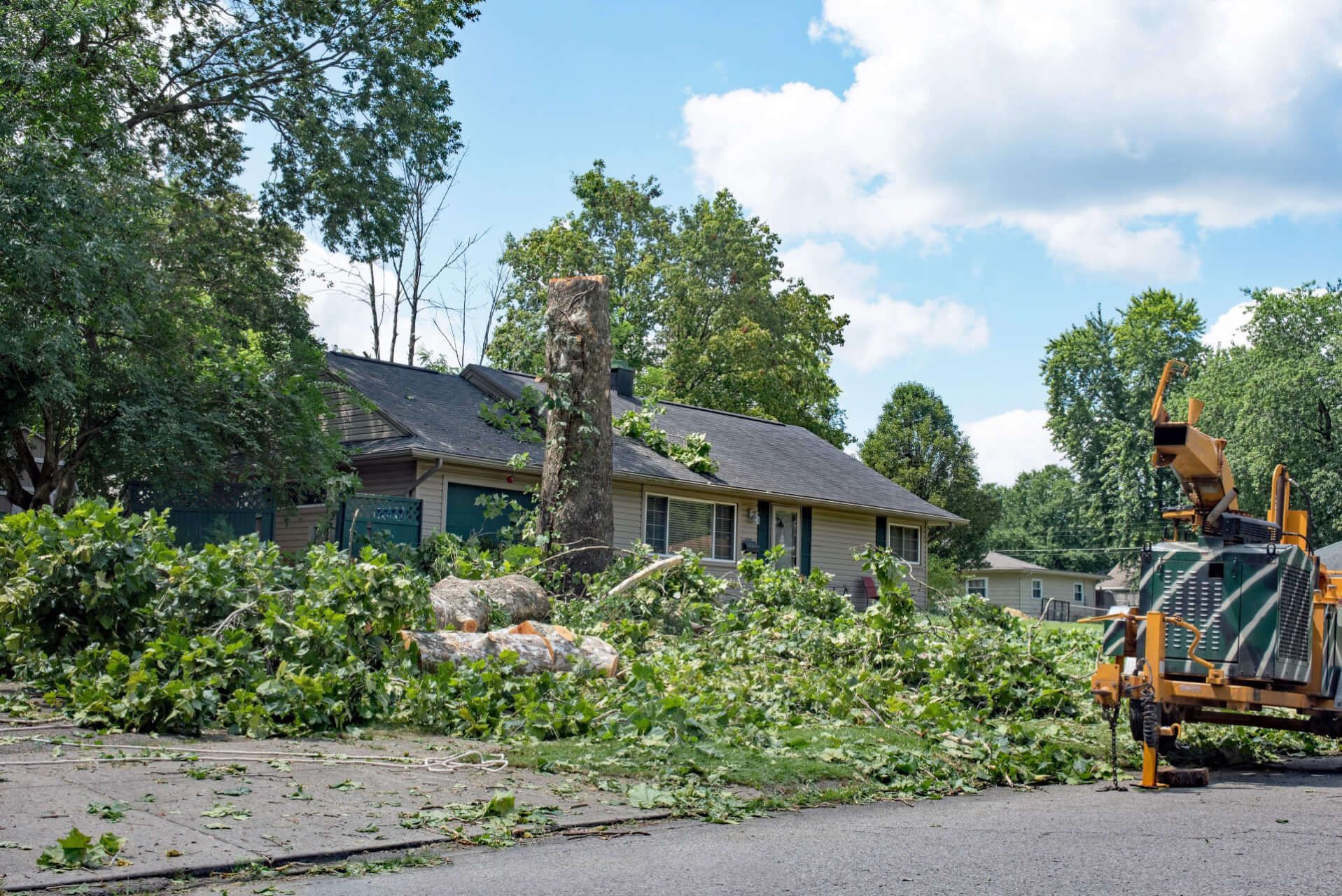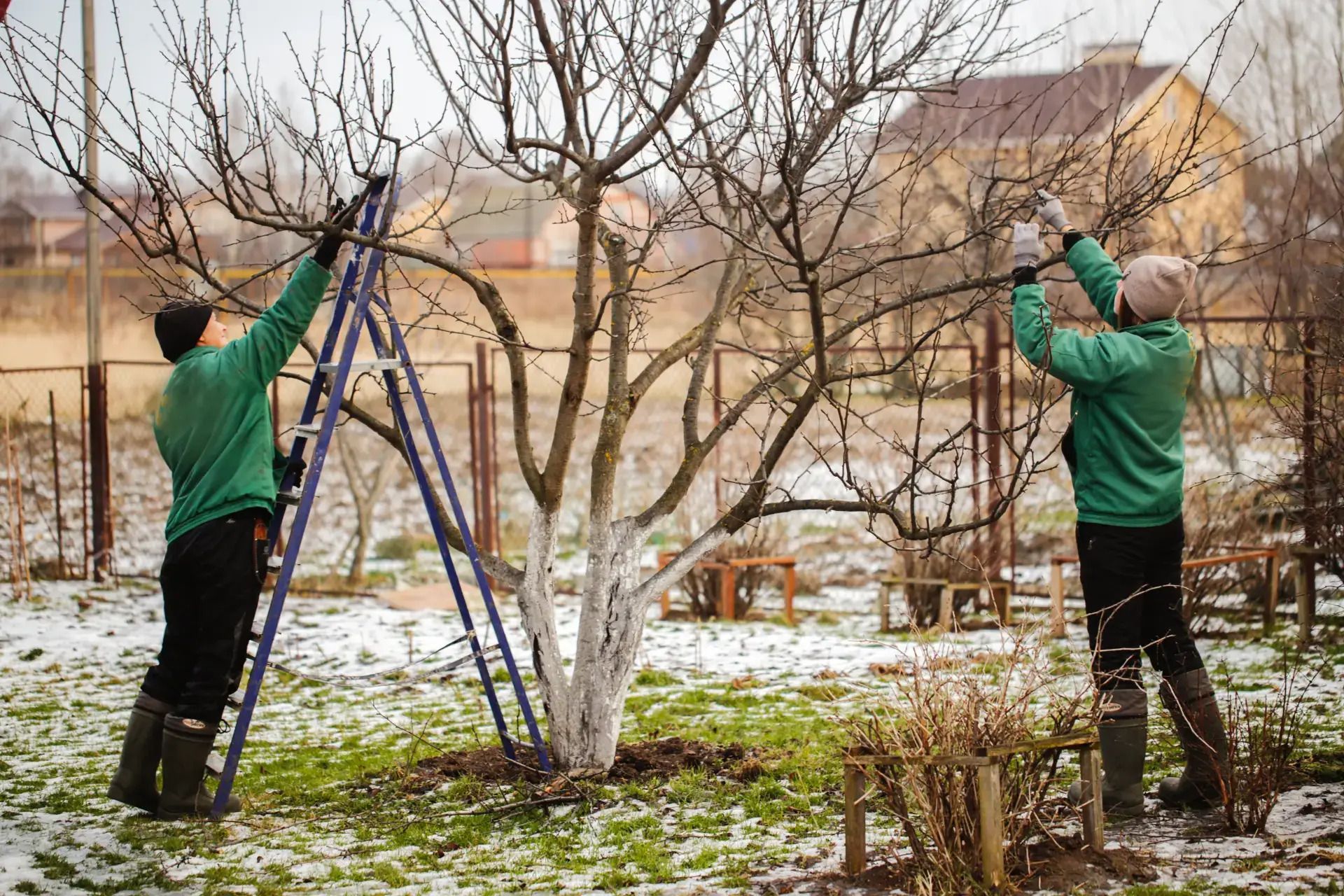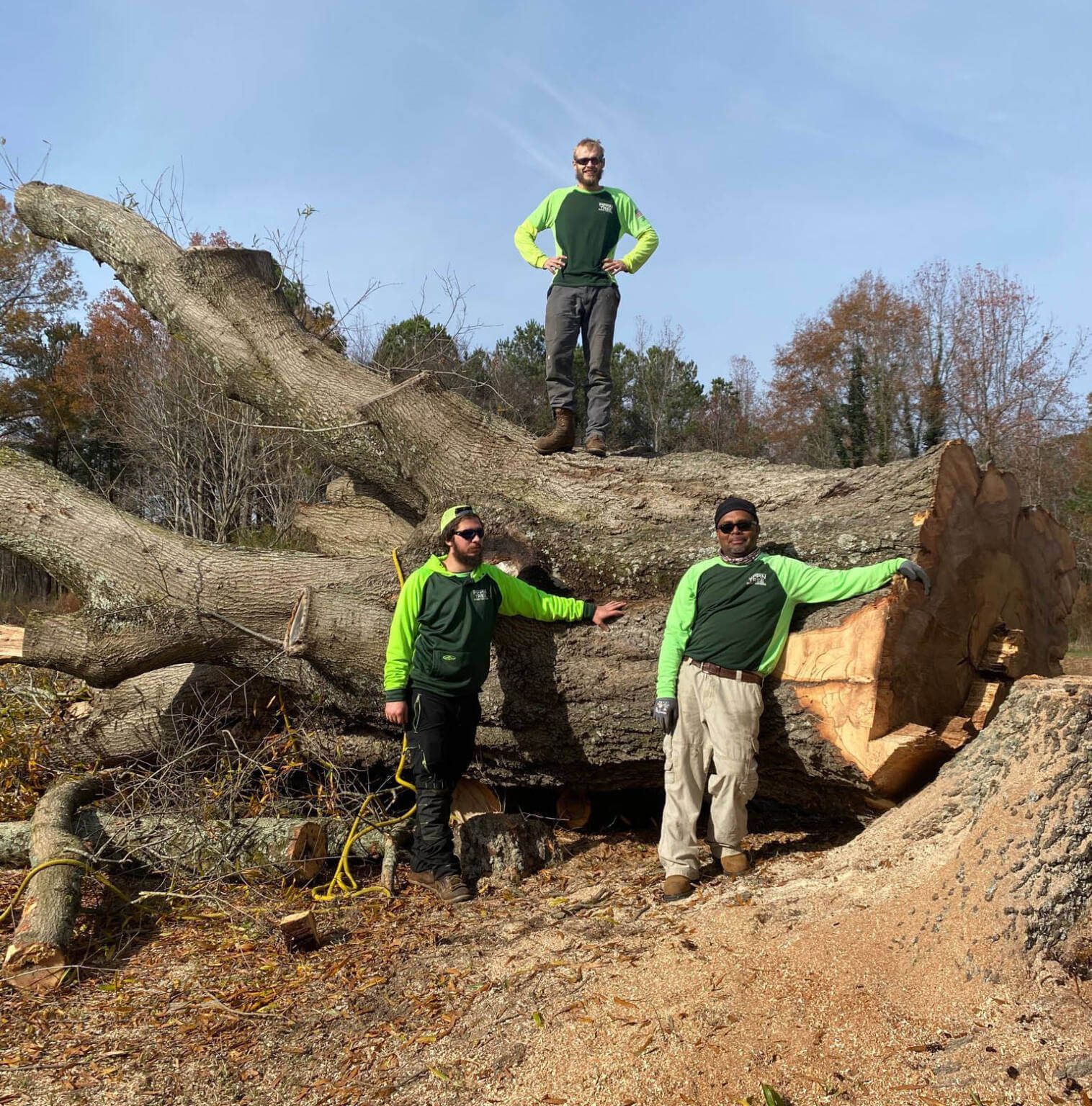Why Would A Tree Need To Be Removed?
The process of totally removing a tree from the ground, including its roots, is known as tree removal. A tree may need to be removed for several reasons, from safety concerns to landscape considerations. The following are a few of the most common causes for availing of tree removal service in North Carolina
Table Of Contents
- Tree Disease
- Trees structural problems
- Trees congestion
- Storm-related damage
- Roots cause damage
- Landscaping planning
- Old tree removal
- How do you decide when to remove a tree?
- Is it a good idea to cut down a tree?
- What time of year is best for tree removal?
- Best Tree Removal Service North Carolina
Tree Disease
Like any living thing, trees can contract diseases and become infested with pests that can do serious harm to them. If a tree gets so ill or infested that it cannot be rescued, removal may be the only way to stop the problem from spreading to other nearby trees.
Trees structural problems
Trees having structural problems, such as wide splits or cracks in the trunk or huge limbs, can endanger both persons and property. A tree may be more likely to fall over during storms or strong winds if its structure is weak.
Trees congestion
Trees planted excessively close to one another may become congested, which can cause competition for resources like water and sunlight. As a result, the tree may grow slowly and develop a weaker structure, making it more vulnerable to injury and illness.
Storm-related damage
If trees can’t be preserved or provide a safety danger to persons or property, they might require being removed. A tree’s integrity may be weakened and its risk of falling increased by rotted wood or significant trunk cracks.
Roots cause damage
Infrastructure interference by roots: Tree roots can occasionally penetrate underground infrastructure, such as water or sewer lines, harming and disrupting services. If the damage is serious, the tree might need to be cut down to stop more issues.
Landscaping planning
Plans for building or landscaping: In some circumstances, a tree may need to be cut down to make room for plans for construction or landscaping. For instance, a tree that is in the way may need to be removed if a homeowner wants to build a patio or an addition to their home.
Old tree removal
Age: Trees have a natural lifespan, much like all other living things. They could weaken and be more vulnerable to illness or harm as they age. It may be safer to cut down an old, unhealthy tree before it falls or causes harm.
How do you decide when to remove a tree?
Tree removal near Raleigh, NC choice should not be made hastily. There are several things to think about, like potential hazards, the condition of the tree, and the effects on the environment. When choosing whether to cut down a tree, there are various stages to follow:
- While considering whether to remove a tree, it is important to consider the safety of both persons and property. An unsafe tree may need to be cut down if it is leaning, has noticeable splits or fissures in the trunk, or has broken or dangling limbs. To avoid damage or harm if a tree falls near electricity lines or other buildings, it may also be necessary to remove it.
- Analyze the tree’s condition; unhealthy trees may need to be removed to stop the spread of disease or pest infestations. Yellowing or wilting leaves, dead branches, and peeling or cracked bark are indications of poor health. A qualified arborist can examine a tree’s condition and decide whether it can be treated or needs to be removed.
- Think about the effects on the environment: Trees help the environment by reducing erosion, purifying air and water, and providing a home for species. It’s crucial to balance the advantages of the tree’s presence with the consequences of removal while thinking about tree removal. A tree may occasionally be possible to be treated or cut to address safety or health issues while still maintaining its environmental advantages.
- Analyze the tree’s value: Trees can be quite valuable economically, especially in metropolitan settings where they can save money on energy bills by providing shade and cooling. It’s crucial to examine the tree’s value as well as prospective replacement expenses and potential benefits lost while deciding whether to remove a tree.
- Analyze the effect on the surroundings: Trees can significantly alter the surroundings in terms of visual appeal, shading, and wind protection. It’s crucial to think about how the removal of a tree may influence the surrounding plants, animals, and general landscape while considering whether to do it.
- Take into account local laws and permits: Depending on where you reside, removing a tree may be subject to local laws or licenses. To make sure you are following all appropriate processes, it is crucial to verify with your local government or arborist.
You can decide whether to remove the tree after taking these things into account. If you do want to remove the tree, it’s crucial to do so securely and efficiently by working with a certified arborist or tree service.
Some recommendations for tree removal include:
- Employ a pro: Removing a tree can be risky, especially if it’s enormous or has a complicated structure. It’s crucial to work with a certified arborist or tree service that has the knowledge and tools required to properly remove the tree.
- Choose the correct time: While tree removal near Clayton, NC can be done at any time of year, there may be benefits to doing so during particular seasons. For instance, it might be simpler and less destructive to the surrounding landscape to remove a tree over the winter while it is dormant.
- Choose the most effective removal technique from the available options, which include sectional tree removal and whole tree removal. The technique will be determined by the size, shape, and surroundings surrounding the tree.
- Take into account the tree’s removal: After the tree has been cut down, you must get rid of the timber and trash. While some tree services offer to remove the logs and debris for you to discard, others can leave it behind. The wood can also be used as firewood.
Is it a good idea to cut down a tree?
Depending on the exact situation, a tree removal near Raleigh, NC may be a smart move. A tree may need to be removed for a variety of good reasons, including safety issues, poor health, interference with infrastructure, or other plant life. Trees are vital and significant for a variety of reasons, and their removal should not be taken lightly.
Below are a few considerations for why it could be wise to remove a tree:
- Safety issues: Trees that are drooping, have significant splits or cracks in the trunk, or have branches that are damaged or hanging down can endanger the safety of persons and property. To avoid harm, it could be required to cut down any trees that could potentially fall or cause damage in a storm or strong wind.
- Unhealthy trees may need to be removed to stop the spread of disease or pest infestations. A qualified arborist can evaluate the condition and decide whether removal is required if a tree is exhibiting symptoms of damage or illness.
- Trees that are spreading too close to electrical lines or other infrastructure could create interference and even damage. Removal might be required in certain situations to avoid harm or annoyance.
- A tree may occasionally be growing in a location where it is having a harmful impact on nearby plant life. For instance, to promote growth and biodiversity, a tree that is preventing other plants from receiving sunlight may need to be cut down.
- Economic factors: In some cases, the upkeep costs or potential harm to a tree may outweigh its economic benefit. To avoid harm to the building, it can be necessary to cut down a tree that is growing close to a house.
Cutting down a tree, though, might not be a wise choice for a variety of reasons. Tree removal should be done carefully because of the many advantages they have for the environment and society.
The following are some reasons why it would not be a smart idea to take down a tree:
- Benefits for the environment: Trees are essential for filtering air and water, preventing erosion, and providing a home for wildlife. The ecosystem and surroundings may suffer if a tree is removed. Hence, an assessment of the impact of removal needs to be weighed in.
- Trees add beauty and charm to communities and public areas, making them a significant component of the visual environment. An area’s aesthetic appeal may suffer if a tree is removed.
- Trees offer shadow and cooling benefits that can lower energy expenditures for companies and households. The removal of a tree can increase energy prices and have a detrimental effect on the climate in the area.
- Costs of repair: The price of elimination and replacement might be high, depending on the spot and height of the tree. In some circumstances, it could be more economical to keep the tree while treating or trimming any problems.
What time of year is best for tree removal?
The species of tree, the local climate, and the cause for removal all influence when is the optimum time of year to remove a tree. Tree removal is generally possible year-round, although there are particular seasons that are preferable for particular reasons.
While choosing the ideal season for tree removal, some things to take into account are as follows:
- Tree species: Each type of tree has a unique life cycle and pattern of growth. At various seasons of the year, some trees may be more prone to harm or disease. For instance, it is often simpler to remove deciduous trees (those that shed their leaves in the fall) during the winter when they are dormant and have fewer leaves.
- Weather: The removal of trees can be significantly impacted by the weather. Extreme weather conditions can make removal more challenging and even deadly. For this reason, it is frequently advisable to forgo tree removal during periods of severe weather.
- Local laws: Certain areas may have particular laws or limits on cutting down trees, including seasonal limitations. It is vital to check with local authorities or a certified arborist if there are any such regulations for tree removal near Clayton, NC.
- The optimal time of year for the job might depend on the purpose of tree removal. For instance, it may be advisable to remove a tree as soon as a disease or pest infestation becomes evident, regardless of the season.
These are some broad recommendations about tree removal services in North Carolina based on these considerations:
- Winter: The ideal season for tree removal is typically winter. Tree removal is simpler and less destructive to the surrounding landscape during the winter months when they are normally dormant and have fewer leaves. Furthermore, accessing and removing the tree’s roots may be made simpler by the frozen ground. For some tree species and climates, however, winter removal might not be the best option.
- Spring: Spring might be a good time to remove trees, especially those that are beginning to bud or have just bloomed. During this period, cutting down a tree can help stop the spread of pests or diseases to other plants. But, spring can be a busy period for tree removal specialists, making scheduling challenging.
- Summer: Removing trees during the summer can be difficult, especially in hot, humid climates. Removal at this time may be more physically taxing, which could raise the possibility of worker injuries. Summer removal, however, might be required in some circumstances due to safety issues or other causes.
- Autumn: September might be a suitable time to remove trees, especially deciduous trees that will soon lose their leaves. During this period, cutting down a tree can help stop the spread of pests or diseases to other plants. Yet, the fall season can also be a busy one for tree removal specialists, making scheduling more challenging.
Best Tree Removal Service North Carolina
It is important to work with a professional arborist or tree service to determine the best time of year for tree removal based on specific circumstances. We at Pippin Tree Service are here to resolve your every tree removal need. Our experts possess the knowledge and expertise to evaluate the tree and surrounding landscape and recommend the best approach for removal.
Contact us to get a free estimate for tree service near you.




